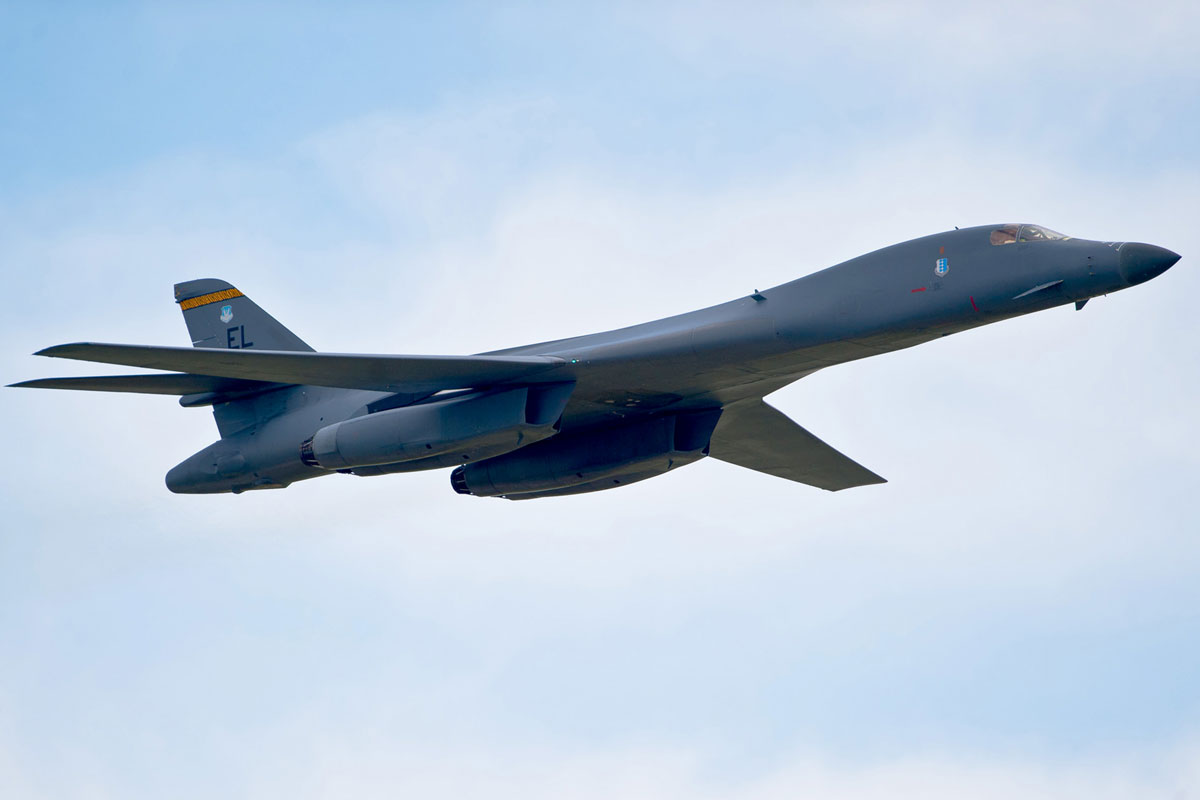
Since it was first conceived more than four decades ago, the B-1B Lancer has been one of the United States Air Force’s most varied and iconic bombers, a device that’s always evolved to meet new missions and requirements.

First conceived in the Cold War era as a nuclear deterrent, it entered service officially in 1985 as a temporary transition between older bombers and the new B-2 Spirit. But instead of being an interim stopgap measure, the Lancer demonstrated it had long-term staying power, becoming a mainstay of America’s long-range strike efforts far into the new millennium.

Its conversion from its nuclear mission to an all-conventional role started early in the 1990s. Under the Conventional Munitions Upgrade Program, the B-1B was evolved into a precision strike platform, ideally suited for missions in Afghanistan, Iraq, and elsewhere.

Upgrades such as the Advanced Targeting Pod enabled crews to strike targets rapidly and precisely upon ground controller coordinates. As program leaders have repeatedly mentioned, this flexibility was not merely a product of the aircraft’s design, but also of the commitment of teams who kept it up to date in evolving times.

One of the Lancer’s most characteristic features is its payload and range of operation. It can deliver more traditional ordnance than any other bomber in the Air Force, providing it with unparalleled strike power. Its speed, payload, and range combined have allowed it to conduct missions as challenging as a 34-hour round trip from Dyess Air Force Base to strike targets in the Middle East and still get back home without requiring forward deployment.

With in-flight refueling and sophisticated targeting systems at their disposal, the B-1B has repeatedly demonstrated it is able to get the job done while ensuring crews stay safe.

Modernization has been a continuous process throughout the bomber’s service life. The Integrated Battle Station upgrade, implemented fleet-wide, significantly enhanced cockpit displays, navigation, and communications. Initiatives such as the BEAST program at Dyess sped up upgrades—such as Link 16 data links, secure communications, advanced defensive avionics, and increased data storage—removing years from conventional modernization cycles. These improvements have further reduced crew workload and honed combat capability, making the aircraft competitive in a fast-evolving environment.

Looking to the future, continued advances are further increasing the Lancer’s capabilities. The return of external weapon carriage has added to its already significant payload capacity, stretching its reach for long-range engagements. It has also functioned as a key hypersonic test bed for weapons, with new pylons currently being manufactured to accommodate even greater payloads.

Naturally, maintaining an aging fleet combat-ready is no easy task. Tinker Air Force Base engineers collaborate with research centers to maintain structural integrity, applying full-scale fatigue testing, innovative repair techniques, and even computerized twin models of the planes to predict and mitigate issues before they reach a critical stage.

Recent deployments demonstrated that the Lancer is still a useful force for deterrence and readiness. Bomber Task Force missions have taken it to places on the planet for rapid-response exercises, long-range overflights, and joint exercises with allied militaries. From in-theater quick-turn refueling exercises to forward basing during infrastructure construction, these missions demonstrate not only the flexibility of the aircraft but the skill and professionalism of the crews and maintenance personnel that get it airborne.

As the Air Force prepares to introduce the B-21 Raider, the B-1B’s legacy is assured. Decades of experience will be applied to the next generation of bombers. But for the time being, the Lancer remains a testament to itself—a reflection of ingenuity, perseverance, and flexibility to changing mission requirements.
